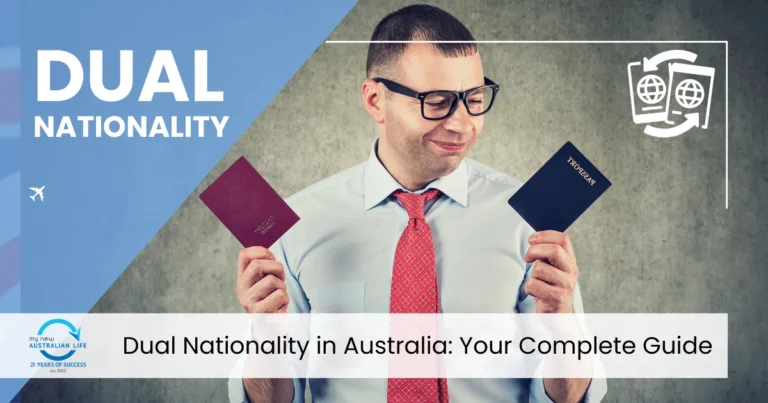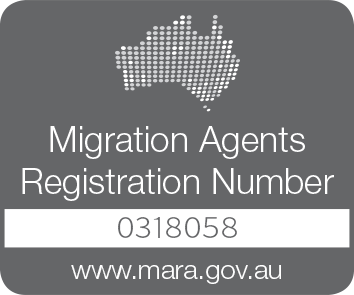Australia has a proud tradition of supporting people who are facing persecution, conflict, or human rights violations in their home countries. Among the visa options available to such individuals is the Humanitarian Stay (Temporary) visa (subclass 842). This visa plays a crucial role in offering a pathway to safety and a new life in Australia for people already in the country who are seeking humanitarian protection.
In this article, we’ll explore everything you need to know about the Australian Humanitarian Visa 842, including its eligibility, benefits, application process, and answers to commonly asked questions.
Overview of the Humanitarian Stay Visa (Subclass 842)
The subclass 842 visa is part of Australia’s Onshore Humanitarian Program, designed for people who are already in Australia and wish to stay due to fear of persecution or substantial discrimination in their home country.
Key Features:
- It is a temporary visa.
- You must be in Australia when you apply.
- You must be sponsored by an Australian citizen or permanent resident, or by an organisation.
- It can lead to permanent visa options under certain conditions.
This visa is ideal for people who cannot return home safely and have support from someone in Australia who can sponsor them.
Who Can Apply for the 842 Humanitarian Visa?
To be eligible for the 842 visa, you must meet the following criteria:
General Eligibility:
- You are in Australia when you apply.
- You do not hold a visa that prevents you from applying (e.g., some bridging visas).
- You fear persecution or substantial discrimination in your home country due to race, religion, nationality, political opinion, or membership of a particular social group.
- You have a sponsor who is an Australian citizen, permanent resident, or eligible New Zealand citizen, or an approved Australian organisation.
If you’re facing real risk upon return and you’re already in Australia—this could be the right pathway for you.
Role of the Sponsor
Sponsors are central to the Humanitarian Stay Visa 842 application. They must show that they are committed to supporting the applicant.
A sponsor must:
- Be an individual (18+ years old) or an organisation based in Australia.
- Be of good character and not have sponsored someone else who later breached visa conditions.
- Provide emotional, financial, and accommodation support if the visa is granted.
- Submit a formal sponsorship form to support the visa application.
The sponsorship acts as a guarantee that the visa applicant will have a network of support while staying in Australia.
Application Process for Subclass 842
Here’s a step-by-step look at how to apply for the subclass 842 humanitarian visa:
Step-by-Step Process:
- Check Eligibility: Ensure you meet all visa requirements.
- Find a Sponsor: Your sponsor must be approved and ready to support you.
- Complete Forms: Fill out Form 842 (Application for an onshore humanitarian visa) and Form 681 (Sponsorship for an onshore humanitarian applicant).
- Gather Supporting Documents:
- Identity documents (passport, birth certificate)
- Proof of persecution/discrimination (statements, reports, etc.)
- Medical and character documents
- Lodge the Application:
- Applications must be submitted by paper and posted or delivered by hand.
- Attend Interview (if required)
- Wait for a Decision: Processing times can vary, depending on complexity.
There is no application fee for the 842 visa, which makes it accessible to people in vulnerable situations.
What Happens After You Apply?
After your application is lodged, it goes through a series of assessments by the Department of Home Affairs.
During Processing:
- You may be granted a Bridging Visa, allowing you to stay lawfully in Australia while your 842 visa is processed.
- You may be asked to attend interviews or provide more documents.
- If granted, you’ll receive your visa with all relevant conditions.
- If refused, you may appeal through the Administrative Appeals Tribunal (AAT).
Rights and Conditions of the Humanitarian Visa 842
While the subclass 842 is a temporary visa, it comes with various rights that protect the applicant and allow them to rebuild their lives.
What You Can Do with an 842 Visa:
- Stay legally in Australia for the duration of the visa.
- Work and study in Australia (conditions may apply).
- Access Medicare, Australia’s public health system.
- Travel in and out of Australia (with permission).
- Apply for permanent protection or other permanent visas after some time.
You are also expected to comply with Australian laws, maintain up-to-date contact details with immigration, and not engage in criminal activity.
Pathways to Permanent Residency
Although the 842 is a temporary visa, it can act as a stepping stone to permanent residency through:
Options Include:
- Protection Visa (subclass 866): This visa grants permanent residency to people who meet the refugee or complementary protection criteria.
- Other Humanitarian or Family Visas: Depending on your personal circumstances.
It’s important to seek legal or migration advice before applying for permanent options to ensure eligibility.
Common Reasons for Refusal
Not all applications are successful. Here are the most common reasons why subclass 842 applications get refused:
- Insufficient evidence of persecution or discrimination.
- No eligible sponsor or sponsor not approved.
- Non-compliance with previous visa conditions.
- Failure to attend interviews or submit requested documents.
- Security or character concerns.
Proper documentation and preparation can significantly improve your chances.
Legal and Community Support
Applying for a humanitarian visa can be overwhelming. Luckily, there are many organisations and migration agents in Australia who can help.
Support Resources:
- Refugee Legal
- Asylum Seeker Resource Centre (ASRC)
- Legal Aid services in your state
- Registered Migration Agents
- Community sponsorship programs
Accessing legal help improves your application’s quality and gives you peace of mind throughout the process.
Frequently Asked Questions (FAQs)
Is the Humanitarian Visa 842 permanent?
No, it is a temporary visa. However, it may lead to permanent protection through other visas like subclass 866.
How long does the 842 visa last?
The visa duration varies depending on the case and decisions by the Department. It typically lasts until you are granted another visa or your case is finalized.
Can I work while holding the 842 visa?
Yes, in most cases, you are permitted to work. Always check your visa grant notice for any specific work conditions.
Can family members be included in the application?
Yes, eligible family members in Australia can be included if they meet the requirements.
Can I apply for this visa if I came to Australia without a visa?
You may still be eligible if you are seeking humanitarian protection, but it’s best to consult a migration lawyer due to the complexity of your situation.
What happens if my visa is refused?
You can appeal the decision at the Administrative Appeals Tribunal. You must act quickly, as appeal deadlines are short.
Can I travel overseas on the 842 visa?
You must get permission to travel. The visa may have travel restrictions unless granted otherwise.
Is there a visa fee?
No, there is no visa application charge for subclass 842.
What’s the difference between subclass 842 and 866?
Subclass 842 is temporary and sponsored, while subclass 866 is permanent and does not require a sponsor.
Who decides my visa application?
The Department of Home Affairs makes the final decision based on your application and supporting evidence.
Final Thoughts
The Humanitarian Stay Visa 842 represents hope and safety for those who have already arrived in Australia but fear returning home. It is a vital option for people needing refuge and who have someone in Australia willing to sponsor and support them.
The application process can be complex, and seeking professional migration assistance is highly recommended. With the right support, many people go on to build safe, successful lives in Australia—starting with this important visa.






